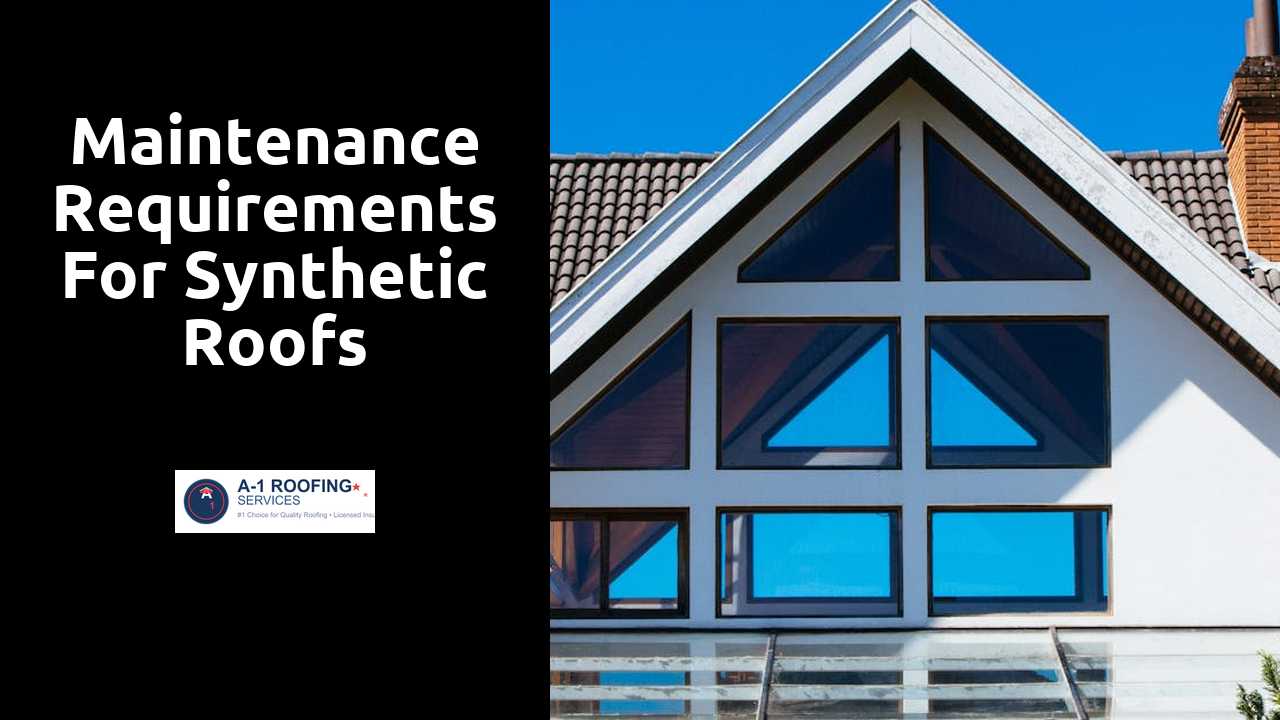
Maintenance Requirements for Synthetic Roofs
Table Of Contents
Common Issues with Synthetic Roofs
Synthetic roofs offer numerous advantages, but they are not immune to common problems. One prevalent issue is the material's tendency to degrade under extreme UV exposure, leading to fading and brittleness over time. Additionally, punctures can occur from debris or heavy foot traffic, which may compromise the roof's integrity and create potential leaks.
Another concern involves improper installation, which can result in poor drainage and siding issues. If seams are not sealed effectively, water can penetrate and cause mold or mildew growth. Regular inspections are essential to catch these issues early, preventing more extensive damage and costly repairs down the line.
Hop over here to discover more.
Identifying Potential Problems Early
Regular inspections are crucial for maintaining synthetic roofs. Homeowners should look for signs of wear, such as cracks, bubbles, or loose seams. These issues can lead to more serious problems if left unaddressed. Observing any discoloration or unusual stains may indicate underlying moisture problems. Keeping an eye on the roof's surface can help catch these potential issues before they escalate.
In addition to visible signs, monitoring the roof’s performance is essential. Noticing increased energy bills may suggest inadequate insulation or ventilation. Regularly checking for leaks inside the home can provide early warnings of roof problems. Taking immediate action upon discovering any discrepancies will save time and money in the long run. Maintaining an awareness of these factors helps ensure the long-term integrity of synthetic roofing materials.
Repairing Synthetic Roofs
Damage to synthetic roofs can manifest in various ways, including punctures, tears, or seams that have begun to separate. The extent of the damage often determines the appropriate repair method. Small punctures may require patches using the same material, while larger tears or significant seam issues might necessitate more comprehensive solutions. Properly assessing the problem is crucial for ensuring a long-lasting repair.
Before attempting any repairs, it's important to clean the affected area thoroughly. Dust, debris, and moisture can hinder the adhesion of patching materials. In many cases, the use of specialized adhesives or tapes designed for synthetic materials can effectively address minor issues. For more serious damage, consulting with a professional can provide guidance on the best course of action, ensuring that repairs uphold the roof's integrity and performance.
When to Call a Professional
Recognizing when to seek professional help is essential for maintaining the integrity of synthetic roofs. Homeowners should be vigilant for signs of significant damage, such as large tears, punctures, or areas where the material is lifting. Issues that may seem minor at first can lead to more serious problems if not addressed promptly. For instance, persistent water pooling or leaks may go unnoticed but can cause further deterioration of the roofing material and underlying structures.
Choosing to consult a professional is advisable when repairs exceed straightforward DIY methods. Professionals possess the expertise and equipment needed to assess the roof’s overall health accurately. They can offer targeted solutions that not only fix immediate issues but also mitigate potential long-term damage. Engaging specialists ensures that the work is up to code and can provide peace of mind regarding the longevity of the roof.
Long-Term Care for Synthetic Roofs
Caring for synthetic roofs involves regular inspections to identify any signs of wear or damage. Schedule these checks at least twice a year. Focus on areas where debris can accumulate, as trapped organic material can lead to mold and deterioration over time. Clean the surface to promote proper drainage and prevent water pooling. Keeping gutters and downspouts clear is also essential in maintaining roof integrity.
Routine maintenance helps extend the lifespan of synthetic roofs significantly. Depending on the material, applying a protective coating can enhance weather resistance. Additionally, avoid placing heavy objects on the roof to minimize stress. Address small repairs promptly to prevent larger issues from developing. Investing time in these practices will ensure that your synthetic roof remains functional and visually appealing for years to come.
Enhancing Durability and Lifespan
Routine maintenance plays a significant role in prolonging the lifespan of synthetic roofs. Regular inspections can help identify minor issues before they develop into major problems. Removing debris, such as leaves and branches, prevents water pooling and reduces the risk of mold and algae growth. Additionally, cleaning the roof's surface ensures that any protective coatings remain effective.
Using high-quality materials during installation can also enhance a synthetic roof's durability. Selecting products designed to endure local weather conditions can prevent premature wear. Proper ventilation is crucial as well. Ensuring adequate airflow reduces thermal stress and helps maintain the integrity of the roofing materials over time. Regularly reviewing the roofing warranty can provide insights into best maintenance practices.
Related Links
How to Choose the Right Synthetic Roofing Material for Your HomeInnovations in Synthetic Roofing Technology